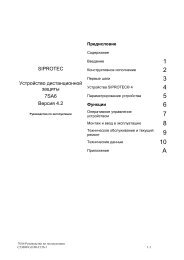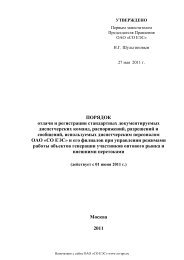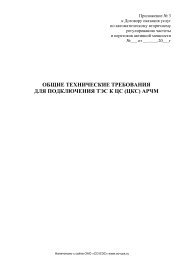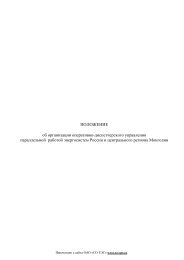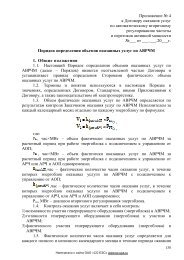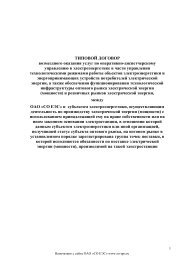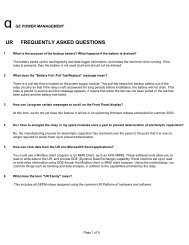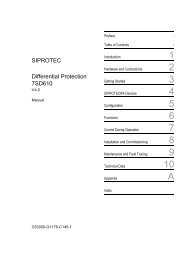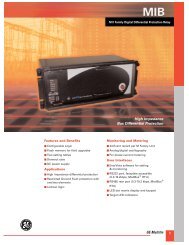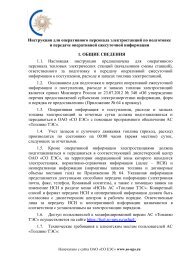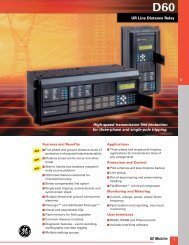SIPROTEC 4 7SA522 Distance Protection Relay for Transmission ...
SIPROTEC 4 7SA522 Distance Protection Relay for Transmission ...
SIPROTEC 4 7SA522 Distance Protection Relay for Transmission ...
You also want an ePaper? Increase the reach of your titles
YUMPU automatically turns print PDFs into web optimized ePapers that Google loves.
<strong>SIPROTEC</strong> 4 – <strong>7SA522</strong><br />
<strong>Distance</strong> <strong>Protection</strong> <strong>Relay</strong> <strong>for</strong> <strong>Transmission</strong> Lines<br />
Functions<br />
<strong>Distance</strong> protection<br />
(ANSI 21, 21N)<br />
Full-scheme design<br />
The main function of the<br />
<strong>7SA522</strong> is a full-scheme distance<br />
protection. By parallel<br />
calculation and monitoring of<br />
all six impedance loops a<br />
high degree of sensitivity and<br />
selectivity is achieved <strong>for</strong> all<br />
types of faults. The shortest<br />
tripping time is less than one<br />
cycle. Single- and three- pole<br />
tripping is possible.<br />
MHO and quadrilateral<br />
characteristics<br />
The <strong>7SA522</strong> relay provides<br />
quadrilateral as well as MHO<br />
zone characteristics. Both<br />
characteristics can be used<br />
separately <strong>for</strong> phase and<br />
ground faults. Resistance<br />
ground faults can <strong>for</strong> instance<br />
be covered with the<br />
quadrilateral characteristic<br />
and phase faults with the<br />
mho characteristic.<br />
Load bias<br />
In order to guarantee a reliable<br />
discrimination between<br />
load operation and short circuit<br />
– especially on long high<br />
loaded lines – the relay is<br />
equipped with a selectable<br />
load encroachment characteristic.<br />
Impedances within this<br />
load encroachment characteristic<br />
will prevent the distance<br />
zones from unwanted<br />
tripping.<br />
Absolute phase-selectivity<br />
The <strong>7SA522</strong> distance protection<br />
incorporates a well proven<br />
highly sophisticated phase<br />
selection algorithm. The<br />
pickup of unfaulted loops is<br />
eliminated to prevent the<br />
adverse influence of currents<br />
and voltages in the fault free<br />
loops. This phase selection<br />
algorithm achieves single<br />
pole tripping and correct distance<br />
measurement in a<br />
wide application range.<br />
Parallel line compensation<br />
The influence of wrong distance<br />
measurement due to<br />
parallel lines can be compensated<br />
by feeding the neutral<br />
current of the parallel line to<br />
the relay. Parallel line compensation<br />
can be used <strong>for</strong> distance<br />
protection as well as<br />
<strong>for</strong> the fault locator.<br />
6 zone packages<br />
Five independent distance<br />
zones and one separate<br />
overreach zone <strong>for</strong> zone<br />
extension schemes are<br />
available. Each distance zone<br />
has separate time stages,<br />
partly valid <strong>for</strong> single phase<br />
or multi-phase faults.<br />
Ground faults are detected<br />
by monitoring the neutral<br />
current 3I 0 and the zero sequence<br />
voltage 3V 0 .<br />
Quadrilateral<br />
The quadrilateral tripping<br />
characteristic permits separate<br />
setting of the reactance<br />
X and the resistance R. The<br />
resistance section R can be<br />
set separately <strong>for</strong> faults with<br />
and without ground involvement.<br />
This characteristic has<br />
there<strong>for</strong>e an optimal per<strong>for</strong>mance<br />
in case of faults with<br />
fault resistance. The distance<br />
zones can be set <strong>for</strong>ward, reverse<br />
or non-directional.<br />
Sound phase polarization and<br />
voltage memory provides a<br />
dynamically unlimited directional<br />
sensitivity.<br />
MHO<br />
The mho tripping characteristic<br />
provides sound phase respectively<br />
memory polarization<br />
<strong>for</strong> all distance zones.<br />
The example in figure 21<br />
shows the characteristic <strong>for</strong> a<br />
<strong>for</strong>ward fault where the mho<br />
circle expands to the source<br />
impedance but never more<br />
than the selected impedance<br />
reach. This mho circle expansion<br />
guarantees safe and selective<br />
operation <strong>for</strong> all types<br />
of faults even <strong>for</strong> close-in<br />
faults.<br />
Insensitive to measuring<br />
value distortion<br />
Digital filtering of the<br />
measured values makes the<br />
protection unit insensitive to<br />
disturbances in the measured<br />
quantities. In particular<br />
the influence of DC components,<br />
capacitive voltage<br />
trans<strong>for</strong>mers and frequency<br />
changes are reduced.<br />
reverse<br />
Load<br />
<strong>for</strong>wards<br />
Z3<br />
Figure 21<br />
<strong>Distance</strong> protection: MHO characteristic<br />
X<br />
ϕ<br />
Line<br />
Z2<br />
Z1B<br />
α<br />
Z1<br />
reverse<br />
Figure 20<br />
<strong>Distance</strong> protection: quadrilateral characteristic<br />
Load<br />
X<br />
Z3 (if revers)<br />
Fuse failure monitoring<br />
The loss of the secondary<br />
V.T. circuit voltage blocks the<br />
distance protection<br />
automatically and prevents<br />
the relay from unwanted<br />
tripping. The secondary V.T.<br />
voltage is supervised by the<br />
integrated fuse failure<br />
monitor. A pickup of the fuse<br />
failure monitor as well as the<br />
ϕ<br />
Z1<br />
Line<br />
Z2<br />
Z4<br />
Z1B<br />
Z5<br />
Z4<br />
Z5<br />
Load<br />
<strong>for</strong>wards<br />
Load<br />
V.T.-mcb binary input block<br />
the distance protection and<br />
can activate the backup<br />
overcurrent protection.<br />
R<br />
R<br />
12 Siemens SIP 4.2 · 08/99



